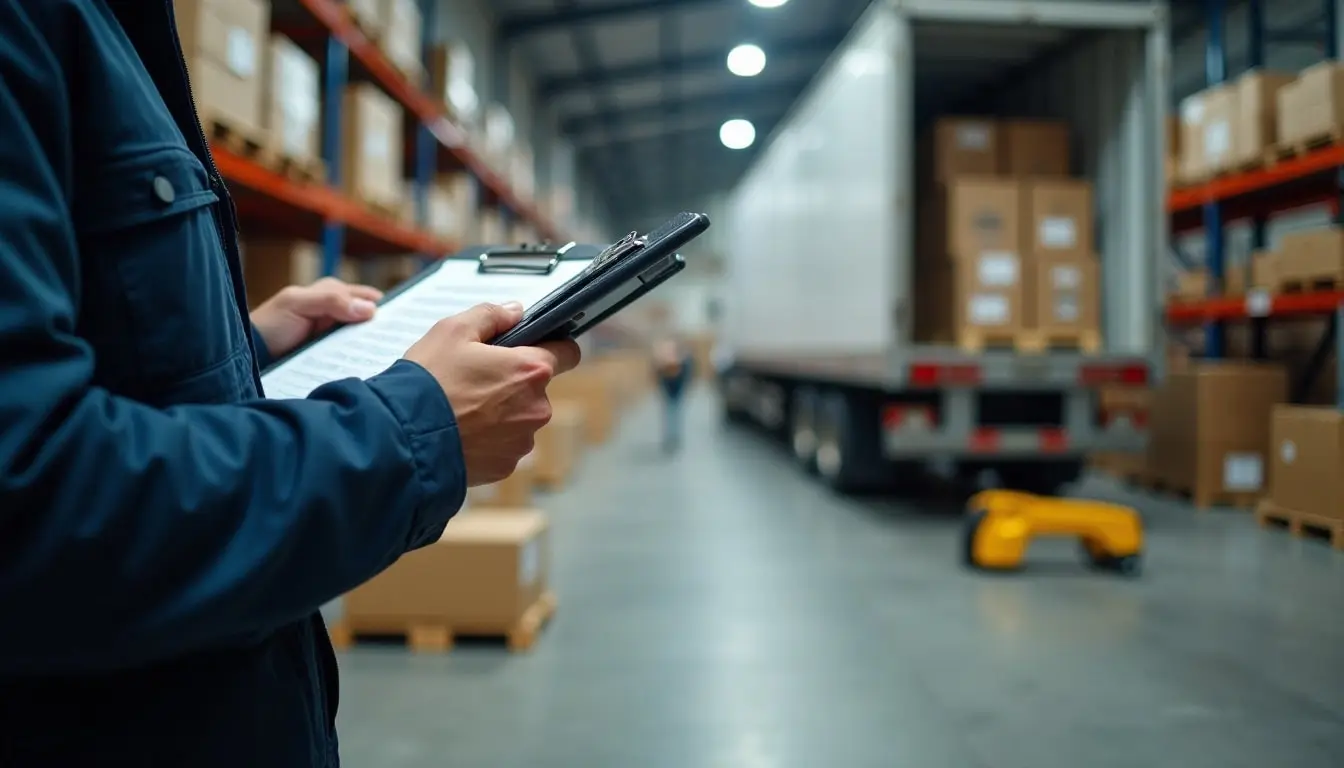
The Benefits of LTL Freight for E-Commerce Businesses
The rapid growth of e-commerce has reshaped shipping requirements, with today’s digital shoppers demanding fast turnarounds and diverse order sizes. For many online sellers, Less Than Truckload (LTL) freight emerges as a perfect solution—enabling frequent, small-scale shipments without the hefty overhead of reserving an entire truck. As online platforms transcend local boundaries and inventory turnover accelerates, LTL’s advantages, from cost savings to inventory optimization, can prove instrumental for e-retail success.
This guide explores the core benefits of LTL freight in an e-commerce setting, highlighting how partial-load shipping methods minimize costs, offer more delivery flexibility, and streamline your overall logistics flow. If your online store is outgrowing parcel shipments but you’re not shipping enough to fill a trailer, read on to see how LTL might bridge the gap between your supply chain’s present and future demands.
Introduction
Growing Demands of E-Commerce Logistics
From small handmade items to large consumer electronics, the e-commerce industry covers a broad spectrum of product weights and sizes. As sales volumes rise, companies face pressure to dispatch loads more frequently—customers expect quicker restocks, flash sales generate volume spikes, and returns swirl back in. LTL shipping adeptly balances these fluxes, letting you pay only for the space your freight actually occupies.
How LTL Fits into Omnichannel Strategies
Modern retailers aim for a unified shopping experience, whether customers buy online and pick up in-store or request direct home delivery. LTL helps stock both distribution centers and brick-and-mortar locations with partial loads that keep inventories fresh without tying up capital in large, full-truck deliveries. Meanwhile, it also handles unsold stock returns or consolidates supplier shipments, boosting agility across channels.
Defining LTL in the E-Commerce Context
Why LTL Shipping Matters for Partial Loads
E-commerce sellers often don’t need an entire trailer unless they handle massive product volumes or seasonal peaks. LTL merges multiple smaller shipments on a single truck, distributing overhead costs—driver wages, fuel, tolls—across multiple shippers. This synergy cuts freight charges, especially if your shipments are roughly 150–15,000 pounds.
Differences from Parcel and FTL
- Parcel: Ideal for single or small-box shipments under 150 pounds, shipping via UPS/FedEx/DHL. Beyond this threshold, per-package costs may become exorbitant.
- Full Truckload (FTL): Renting the entire trailer suits businesses shipping 20,000 lbs. or more or needing direct routes with fewer handling touches.
- LTL: Sits between these extremes, letting you share space, pay for your portion, and still maintain consistent ship-out schedules.

Advantage #1: Cost-Effective Shipping
Sharing Trailer Space to Lower Costs
By consolidating loads from multiple online merchants and manufacturers, LTL carriers fill trucks more efficiently than if each shipper tried to dispatch half-empty trailers. Spreading overhead fosters competitive rates: you’re spared from paying for vacant trailer footage. This approach can drastically reduce your per-pound cost compared to dedicated vehicles.
Negotiating Volume-Based Discounts
While LTL might look pricier per pound than FTL on paper, e-commerce sellers shipping consistent partial loads in specific lanes often qualify for discounted tariffs or simpler surcharges. If you demonstrate regular frequency (weekly or monthly partial shipments), carriers tend to offer better contract rates or priority scheduling—particularly if you align with their lane coverage.
Advantage #2: Enhanced Delivery Flexibility
Frequent, Smaller Shipments Aligned to Demand
In e-commerce, demand can fluctuate within days—peak times around holidays or promotional periods require immediate inventory, while slack seasons invite smaller stock levels to reduce overhead. LTL shipping accommodates incremental or just-in-time restocking, so you avoid overfilling your warehouse. Plus, you can scale up or down shipments easily if orders spike or recede.
Meeting Customer Expectations for Speed
Consumers expect quick shipping times, but not all orders justify a full truck. LTL’s multi-stop framework routes shipments efficiently across local or regional networks. With well-chosen carriers or 3PLs, you can maintain 2–3 day deliveries on many routes—crucial for brand reputation in a competitive environment.
Advantage #3: Improved Inventory Control
Avoiding Excess Stock with More Frequent Restocks
Massive, sporadic deliveries tie up working capital in unsold goods, risk obsolescence, and complicate warehouse flow. LTL fosters smaller, more frequent supply cycles, allowing you to match real-time demand. Meanwhile, you lessen the chance of stockouts or overstock—both detrimental to e-commerce profitability.
Balancing Lead Times and Warehouse Space
Online stores can’t let shelves go bare, yet storing excessive goods is costly. By scheduling LTL shipments regularly, you keep stock levels optimized. This “little and often” approach also reduces your warehousing footprint—helpful if your fulfillment centers or third-party warehouses charge based on volume or picking complexity.

Advantage #4: Reduced Environmental Impact
Efficient Truck Capacity Usage
Shipping partial loads more frequently might seem wasteful, but LTL’s core concept—shared capacity—lowers the total number of trucks on the road. Instead of three half-empty trailers, carriers consolidate them into one fuller truck, cutting emissions per pound of cargo. This green edge resonates with eco-minded consumers and can complement broader sustainability initiatives.
Potential for Consolidation and Fewer Miles
Carriers specializing in e-commerce LTL often run direct routes to distribution hubs or final-mile cross-docks, eliminating unproductive routes. Meanwhile, advanced TMS planning merges your loads with compatible shipments, further reducing empty miles. The net effect is minimized carbon footprint and cost synergy.
Advantage #5: Seamless Returns Management
Coordinating Reverse Logistics in E-Commerce
High return rates plague e-commerce—especially in apparel or consumer electronics. LTL accommodates bulk returns, from unsold or defective merchandise flowing back to your main warehouse. Scheduling an LTL pickup is simpler than parcel if you have multiple boxes or palletized items. This helps you restock, refurbish, or recycle goods swiftly, sustaining efficient reverse logistics loops.
LTL’s Role in Handling Bulk Returns
Retailers running local or store-based pickup for returns can amass multiple returned items before shipping them back. In that case, partial loads can be consolidated at a central store for a single LTL pickup, avoiding multiple small parcels. This synergy reduces shipping costs and centralizes reverse processing—leading to faster quality checks or refunds.
Best Practices for E-Commerce LTL
Selecting the Right Carrier or 3PL
Not all carriers excel in e-commerce. Some focus on region-specific routes or specialized cargo types. Evaluate:
- Transit Times: Typical daily schedules for your key lanes.
- Claims Ratio: Minimizing risk of product damage.
- Integration: Do they interface well with your shipping software or WMS?
Alternatively, 3PLs can source multiple carriers, offering a broader solution if your shipping footprint covers multiple areas.
Packaging, Labeling, and Tracking
E-commerce items, especially if they’re fragile or unique, need robust packaging to survive multi-stop handling. Use protective materials, label each parcel or pallet carefully, and align BOL data with any shipping automation system for accurate references. Real-time tracking via a TMS or carrier portal keeps your operations team informed, preventing last-minute confusion.
Conclusion
LTL freight stands as a vital tool for e-commerce logistics—striking a balance between cost efficiency and timely delivery for partial shipments. By embracing LTL’s frequent restocks, minimized storage overhead, and flexible routes, online retailers can consistently adapt to volatile demand. Further, robust packaging and careful carrier selection fend off damage claims while brandishing an eco-friendly stance thanks to shared trailer capacity.
Whether you’re scaling up from parcel shipping or seeking better synergy alongside full truckloads, exploring LTL solutions is a must for modern e-commerce. By forging tight-knit relationships with carriers or 3PLs, you’ll harness optimum rates, transit reliability, and specialized services tailored to e-retail’s fast pace. Ultimately, LTL isn’t just about shipping fewer items; it’s about streamlining your entire supply chain for dynamic growth.
How useful was this post?
Click on a star to rate it!
Average rating 0 / 5. Vote count: 0
No votes so far! Be the first to rate this post.



